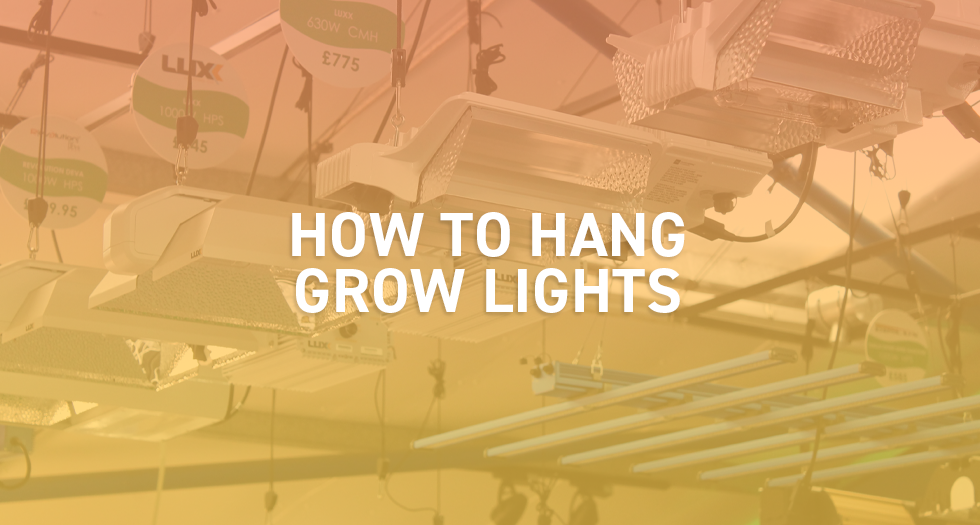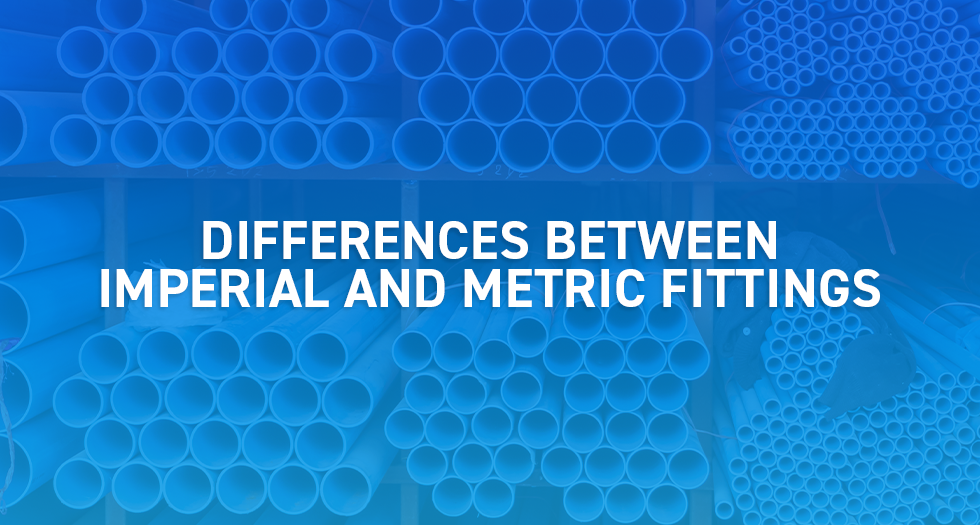Hanging grow lights might seem like a simple task but there are various aspects to consider before hanging lights. The type of lights, spectrum, coverage, and intensity will influence the best way to install lighting in your indoor garden. The different plant growth stages will also determine how far away your lights need to be positioned from the plants. If you are wondering how to hang grow lights, read on for some expert tips.
Determine Light Spectrum, Coverage & Intensity
Different grow lights have different intensities, spectrums and light coverage. Determining these aspects is essential to ensure your lights are best positioned to provide adequate lighting for your plants at all growth stages.
Grow light manufacturers usually specify typical PAR (Photosynthetically Active Radiation) measured in nanometres, and PPFD (Photosynthetic Photon Flux Density) measured in micromoles. Both of which are essential for creating optimal lighting conditions.
Before you buy and hang your grow lights, consider how PAR and PPFD work together to create the ideal lighting conditions for healthy plants and fruitful yields.
Let’s start by looking at why PAR and PPFD are so important, and how they influence different growth phases.
What is PAR?
PAR (Photosynthetically Active Radiation) refers to the range of light wavelengths on the light spectrum from 400 to 700 nanometres nm. It is a key metric in horticultural lighting that indicates the quality and effectiveness of the light spectrum for plant growth.
The PAR range of the light spectrum includes:
Blue light (400 – 500 nm): Blue light promotes vegetative growth and overall plant health. It regulates chlorophyll production to support compact plant structure and strong leaf development. Blue light is particularly important during the early stages of plant life, including the seedling and early vegetative stages.
Green light (500 – 570 nm): Green light plays a supportive role in plant development but is less efficient in photosynthesis compared to blue and red light. Green light can penetrate deeper into the canopy to reach lower leaves and promote even growth. It also contributes to overall light quality.
Yellow light (570 – 590 nm): Although yellow light is not a primary driver for photosynthesis it contributes to a well-rounded natural light spectrum. Yellow light supports overall plant health , complementing both blue and red light, and also enhances plant colour.
Red Light (600 – 700 nm): Red light is crucial for flowering and fruiting stages. Lack of red light will impact size, yield, taste, smell, and the overall quality of your produce. It promotes bud development and triggers plant reproductive processes. Red light also regulates circadian rhythms and photoperiod responses to ensure plants fruit and flower at appropriate times.
Far Red Light (700 – 800 nm): Although not part of the PAR light range, it is worth noting that far red light is essential for germination, shade avoidance and stem elongation.
Determining the PAR of grow lights is essential to ensure your plants receive a well-rounded light spectrum that will support the different growth stages.
Different Grow Lights Have Different PAR
With so many types of grow lights available, it’s a good idea to familiarise yourself with typical PAR spectrums for each type of grow light.
LED Grow Lights: Light emitting diode lights are available in full or tailored spectrums. Full spectrum LED lights produce the entire PAR range of wavelengths, making these a great choice for all growth stages. Don’t forget that you’ll need to supplement your lighting with far red for seed germination.
Some LED lights provide a customised range of wavelengths that are optimised for the vegetative or flowering stages. Blue LEDs are ideal for boosting the vegetative phase while red LEDs promote fruiting and flowering.
High Pressure Sodium Lamps: A type of high intensity discharge lamp (HID), HPS lights emit primarily yellow and red wavelengths. They are ideal for the flowering stage but less effective for the vegetative stage.
Metal Halide Lights: Also a HID light, metal halides use a quartz arc tube to produce light. They emit primarily blue wavelengths which are perfect for the vegetative stage.
Ceramic Discharge Metal Halide Lights (CDMs): CDM lights, also known as CMH lights, use a ceramic arc tube to produce light. Producing a broad spectrum including red and blue wavelengths, they are suitable for the vegetative and flowering stages.
Fluorescent lights: CFLs (compact fluorescent lights) are available in a range of colour temperatures including red and blue. They are cost effective, low heat bulbs but are generally less effective than full spectrum LEDs or HID lamps due to lower light intensity and limited spectrum.
What is PPFD?
Put simply, Photosynthetic Photon Flux Density (PPFD) measures the intensity of light that plants receive from the PAR spectrum. It is an important metric in indoor horticulture that is expressed in micromoles per metre per second (µmol/m²/s).
PPFD can be measured using a quantum sensor or PAR meter which detects the number of photons in the PAR range that hit a surface per second.
Different growth stages have different PPFD requirements to ensure optimal development at every growth stage.
- Seedlings: Typically require a lower PPDF of 100 – 300 µmol/m²/s.
- Vegetative stage: Requires a medium PPDF OF 400 – 600 µmol/m²/s.
- Flowering Stage: This stage requires a higher PPFD of 600 – 900 µmol/m²/s. Plants require higher light intensity so they can produce energy for the development of flowers and fruit. If plants receive insufficient PPFD at this stage, both quality and yield can be affected. Inadequate PPFD will lead to poor bud formation resulting in smaller flowers and fruit. The production of essential oils, flavonoids and other essential compounds relies on high PPFD values. Insufficient light intensity will impact flavour, aroma and the potency of flowers.
Different Grow Lights Have Varying PPFD Values
Just as PAR varies across different grow lights, so does PPFD. PPFD can be measured using a light meter which detects the number of photons that hit a surface per second. The height and positioning of your lights will optimise PPFD to achieve the required levels for various growth stages. Supplemental lighting can be installed to fill any gaps to ensure even light coverage across the grow space.
Although different lights and lighting brands may differ in their PPFD output, below is a summary of typical PPFD ranges in popular grow lights:
- LEDs: These typically have an output of 200 – 1000+ µmol/m²/s. Quality full spectrum LEDs can provide high PPFD with excellent energy efficiency. LEDs can often be tailored to specific PPFD, and offer a stable, uniform light distribution.
- Metal Halide Lamps: MHs typically produce 200 – 600 µmol/m²/s. They have a lower PPFD output compared to HPS lamps and premium LEDs.
- CDMs: These typically range between 300 – 800 µmol/m²/s which is higher than traditional metal halide bulbs.
- HPS Lights: High pressure sodium lamps have a typical PPFD of 400 – 900 µmol/m²/s.
- CFLs: Less efficient, they have a typical PPFD value of around 50- 200 µmol/m²/s.
|
Type of Grow Light |
Typical PPFD Range (µmol/m²/s) |
|
LEDs |
200- 1000+ |
|
Metal Halide (MH) |
200 - 600 |
|
Ceramic Metal Halide (CMH/CDM) |
300 - 800 |
|
High Pressure Sodium (HPS) |
400 - 900 |
|
Compact Fluorescent Lights (CFLs) |
50 - 200 |
How Does PAR & PPFD Influence How to Hang Grow Lights?
PPFD and PAR work in tandem to provide adequate light and intensity at different growth stages. But how do these important metrics influence how to install and hang grow lights in the grow room?
Firstly, the different growth stages need different wavelengths from the PAR range. As a result, you must ensure your grow lights provide the necessary spectrum and prepare to supplement lighting to fill any gaps in the PAR range. For example, if you choose HPS lamps that primarily emit yellow and red light, you’ll need to introduce blue lighting with another type of light to ensure your plants get the essential blue wavelengths to support the vegetative stage.
When you are happy that your lighting system provides the optimal PAR range, you can plan the positioning of your lights for the best coverage across the growing area. Aspects to consider include the spacing of lighting fixtures and their height above plants.
PPFD should be uniform across the grow space. Full spectrum LEDs have a focused light spread and provide uniform PPFD from edge to edge. In contrast, some other grow lights such as HPS lamps, can have decreasing PPFD levels near the edges of the light beam. Reflectors are a useful accessory for these lights as they improve overall coverage and help to reduce gaps in light intensity. Depending on your set up, you may need to add more lighting to ensure optimal coverage.
Grow lights must be hung at the optimal height and distance to deliver the correct levels of PPFD to the plant canopy. If they are hung too close, they can cause heat burn or stress. When hung too far away plants may receive insufficient light intensity. This can result in elongated stems and weaker structures due to plants stretching up towards the light source.
Use rope ratchet light hangers to adjust the height and reposition your grow lights. These attach to overhead bars that are designed to take the weight of light fittings.
Many grow lights allow the adjustment of light intensity via built-in dimmer switches or dimmable grow light ballasts. With careful monitoring of PAR and intensity, you can make regular adjustments to fine tune PPFD levels based on growth stages.
How Far Should You Hang Grow Lights from Plants?
The distance between the lights and plants will impact PPFD.
LEDs are low heat so can be safely hung closer to plants without risking heat damage. Depending on the growth stage they can be hung from 12 - 24 inches away from the plants.
Metal halide lights have a high heat output. Therefore, these lights need to be rigged higher to prevent heat stress and burn. Depending on the growth stage MH lights can be hung around 18 – 36 inches from plants.
CMH lights tend to have a moderate heat output. These can safely be hung around 18 – 36 inches away from plants while ensuring adequate PPFD.
HPS lamps emit significant heat and light intensity, so should typically be hung around 24 – 36 inches away from plants depending on the growth stage.
CFLs are low intensity and low heat. These lights can be hung approximately 6 – 12 inches from plants.



